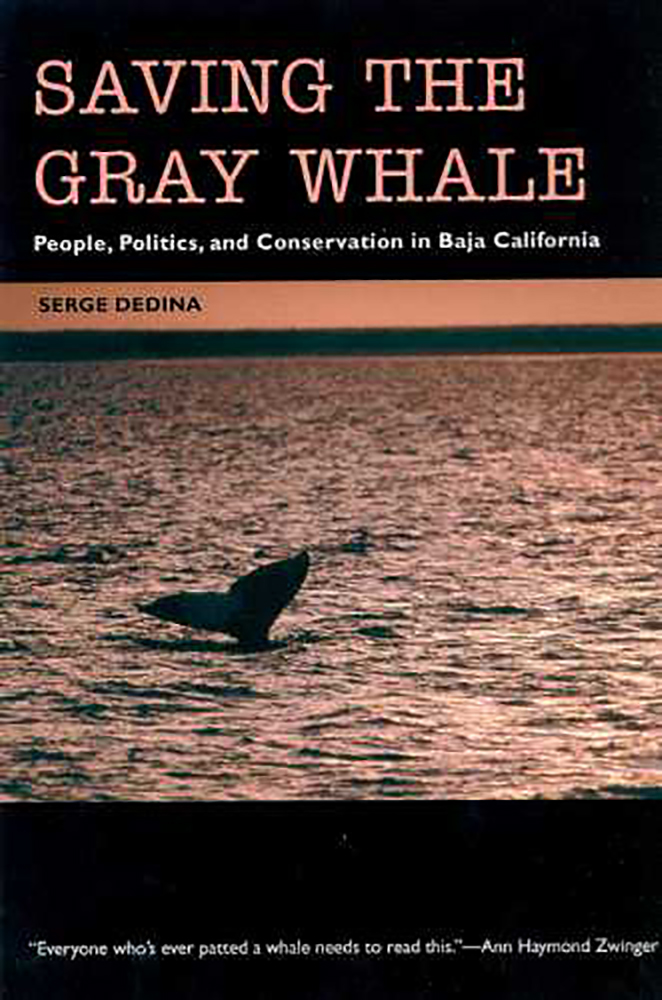Saving the Gray Whale
People, Politics, and Conservation in Baja California
Paperback ($23.95), Ebook ($23.95)
Buy
Once hunted by whalers and now the darling of ecotourists, the gray whale has become part of the culture, history, politics, and geography of Mexico's most isolated region. After the harvesting of gray whales was banned by international law in 1946, their populations rebounded; but while they are no longer hunted for their oil, these creatures are now chased up and down the lagoons of southern Baja California by whalewatchers. This book uses the biology and politics associated with gray whales in Mexican waters to present an unusual case study in conservation and politics. It provides an inside look at how gray whale conservation decisions are made in Mexico City and examines how those policies and programs are carried out in the calving grounds of San Ignacio Lagoon and Magdalena Bay, where catering to ecotourists is now an integral part of the local economy.
More than a study of conservation politics, Dedina's book puts a human face on wildlife conservation. The author lived for two years with residents of Baja communities to understand their attitudes about wildlife conservation and Mexican politics, and he accompanied many in daily activities to show the extent to which the local economy depends on whalewatching. "It is ironic," observes Dedina, "that residents of some of the most isolated fishing villages in North America are helping to redefine our relationship with wild animals. Americans and Europeans brought the gray whale population to the brink of extinction. The inhabitants of San Ignacio Lagoon and Magdalena Bay are helping us to celebrate the whales' survival." By showing us how these animals have helped shape the lifeways of the people with whom they share the lagoons, Saving the Gray Whale demonstrates that gray whales represent both a destructive past and a future with hope.
More than a study of conservation politics, Dedina's book puts a human face on wildlife conservation. The author lived for two years with residents of Baja communities to understand their attitudes about wildlife conservation and Mexican politics, and he accompanied many in daily activities to show the extent to which the local economy depends on whalewatching. "It is ironic," observes Dedina, "that residents of some of the most isolated fishing villages in North America are helping to redefine our relationship with wild animals. Americans and Europeans brought the gray whale population to the brink of extinction. The inhabitants of San Ignacio Lagoon and Magdalena Bay are helping us to celebrate the whales' survival." By showing us how these animals have helped shape the lifeways of the people with whom they share the lagoons, Saving the Gray Whale demonstrates that gray whales represent both a destructive past and a future with hope.
"This book is a 'must read' for anyone interested in the history of the eastern North Pacific gray whale or planning to go to Baja's lagoons to see the gray whales in the winter months."—Whalewatcher
"Both informative and instructive and leaves the reader with considerable optimism about the future of the gray whale in Baja California and a broad-based Mexican conservation movement." —Environmental History
"If you love the Baja Peninsula and/or gray whales or cared about the recently finished battle to save Laguna San Ignacio from development by Mitsubishi, then this book is a 'must read.' . . . This book is rich with narrative description and personal passion." —Journal of Environment and Development
"Both informative and instructive and leaves the reader with considerable optimism about the future of the gray whale in Baja California and a broad-based Mexican conservation movement." —Environmental History
"If you love the Baja Peninsula and/or gray whales or cared about the recently finished battle to save Laguna San Ignacio from development by Mitsubishi, then this book is a 'must read.' . . . This book is rich with narrative description and personal passion." —Journal of Environment and Development
 The University of Arizona Press
The University of Arizona Press

